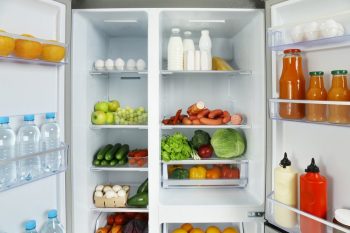
Refrigerators are a vital part of our daily lives, preserving our food and keeping it fresh. But did you know that there is a proper way to arrange food in a refrigerator? In this comprehensive guide, we will dive deep into why there is a proper placement for food in a refrigerator, the potential risks of improper food placement, and how to properly store different types of foods.
Proper food placement in a refrigerator is crucial to prevent cross-contamination, maintain the right temperature for different foods, reduce food waste, ensure proper air circulation, and promote easy access and healthier food choices. Improperly stored food can lead to bacterial growth, foodborne illnesses, spoilage, and waste. Different types of foods should be stored in different areas of the fridge, such as ready-to-eat foods on the top shelf and raw meat on the bottom shelf, to ensure safety and freshness.
Why Proper Food Placement Matters
Proper food placement in a refrigerator is essential for several reasons:
Preventing cross-contamination: Storing raw and cooked foods separately helps to prevent the transfer of harmful bacteria from raw food to cooked food. For example, ready-to-eat foods should be stored on the top shelf, away from raw foods.
Maintaining proper temperature: Different areas of the fridge have different temperatures, which can affect the freshness and safety of the food. Organizing your fridge according to the appropriate temperature zones helps keep food fresh and safe to eat.
Reducing food waste: An organized fridge allows you to easily see what you have and plan meals accordingly, based on expiration dates. This helps prevent food from going bad before it can be used, reducing waste and saving money.
Ensuring proper air circulation: Overloading the fridge can block the cooling unit and prevent proper air circulation, which is essential for maintaining the right temperature and keeping food safe.
Easy access and better food choices: An organized fridge makes it easier to find and access the food you need, promoting healthier food choices and reducing the likelihood of buying duplicate items.
Risks of Improper Food Placement
Improper food placement in the fridge can lead to several potential risks, including:
Bacterial growth and foodborne illnesses: Storing food improperly can result in the growth of harmful bacteria, such as Listeria, which can cause foodborne illnesses. For example, placing meat on the top shelf of the fridge can lead to juices dripping onto other foods, increasing the risk of cross-contamination.
Spoilage: Storing food at incorrect temperatures or for too long can lead to spoilage, even if the food is refrigerated. Spoilage bacteria can grow at low temperatures, causing food to develop off or bad tastes and smells.
Food waste: Improper food storage can lead to food spoilage and waste, which has significant economic and environmental impacts.
Contamination: Storing raw and cooked foods together or not using proper containers can result in cross-contamination, increasing the risk of foodborne illnesses.
How to Properly Store Different Types of Foods
To ensure that your food remains safe to eat, here are some guidelines to follow:
Top shelf: Store ready-to-eat foods, such as packaged foods, leftovers, cooked meats, and prepared salads here.
Upper shelves: This is the place for foods that don’t need cooking, such as deli meats, yogurt, and cheese.
Middle shelves: Dairy products like milk, cheeses, yogurt, and drinks should be stored here.
Lower/middle shelves: Dairy products such as milk, cheeses, yogurt, and butter should be kept here.
Bottom shelf: This is the coldest part of the fridge and should be used to store raw meat, poultry, and fish in sealed containers.
Drawers: Store fruits, vegetables, and herbs in the drawers at the bottom of the fridge, also known as salad drawers.
Door: The refrigerator door is the warmest part and is suitable for storing condiments, juices, and other items with a longer shelf life.
By following these guidelines, you can ensure that your food remains safe to eat and lasts longer, reducing the risk of foodborne illnesses and saving money on groceries.












